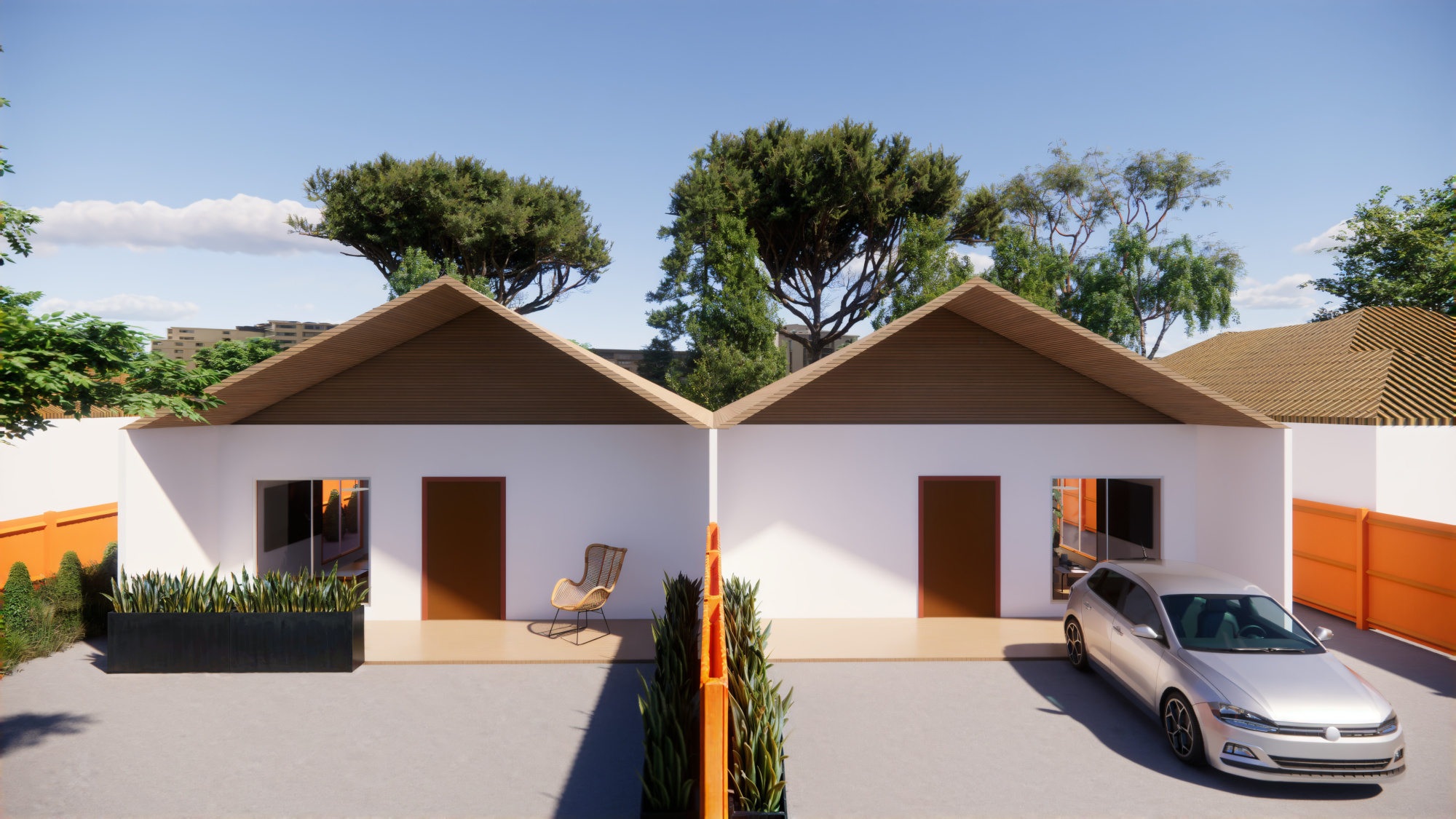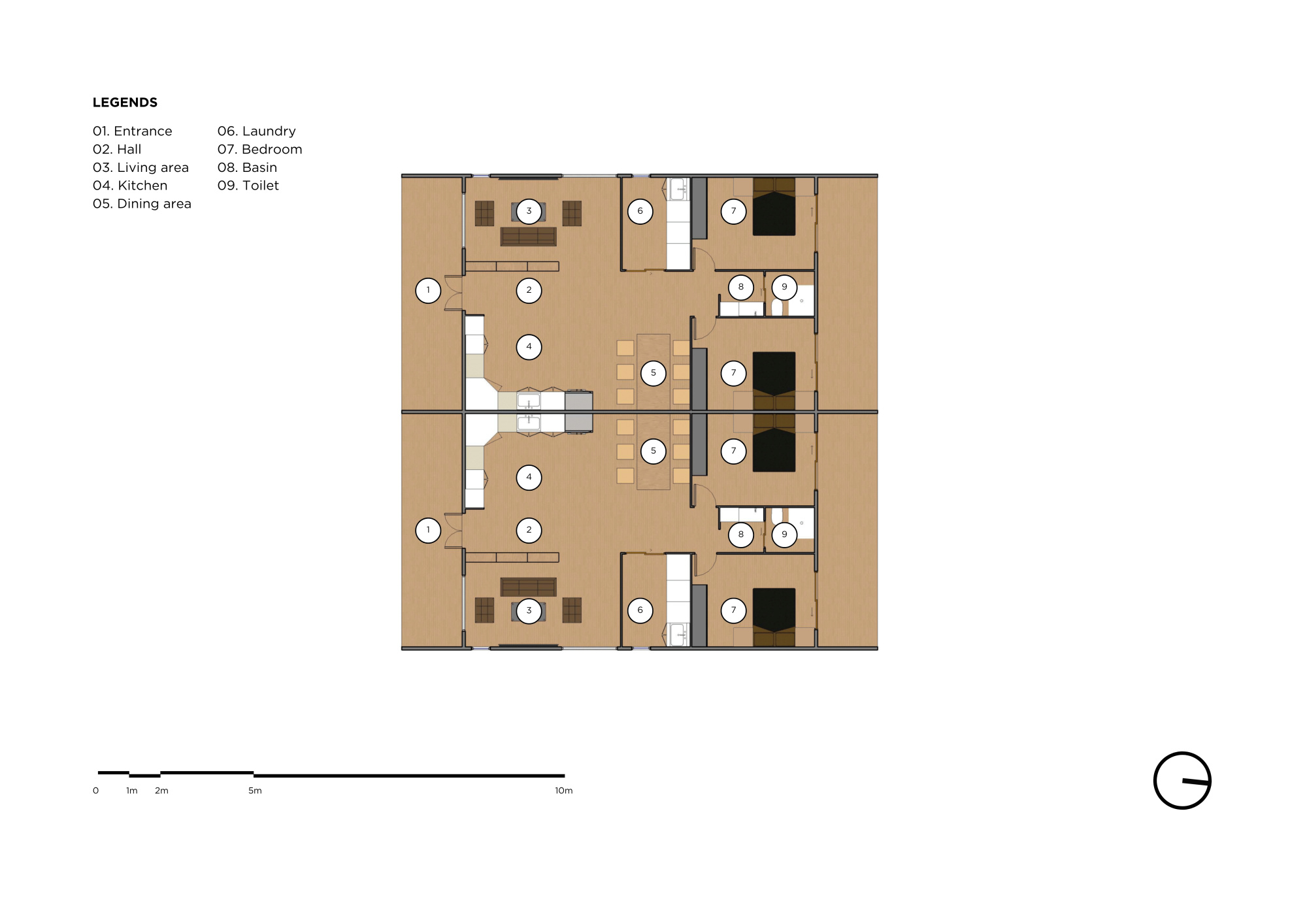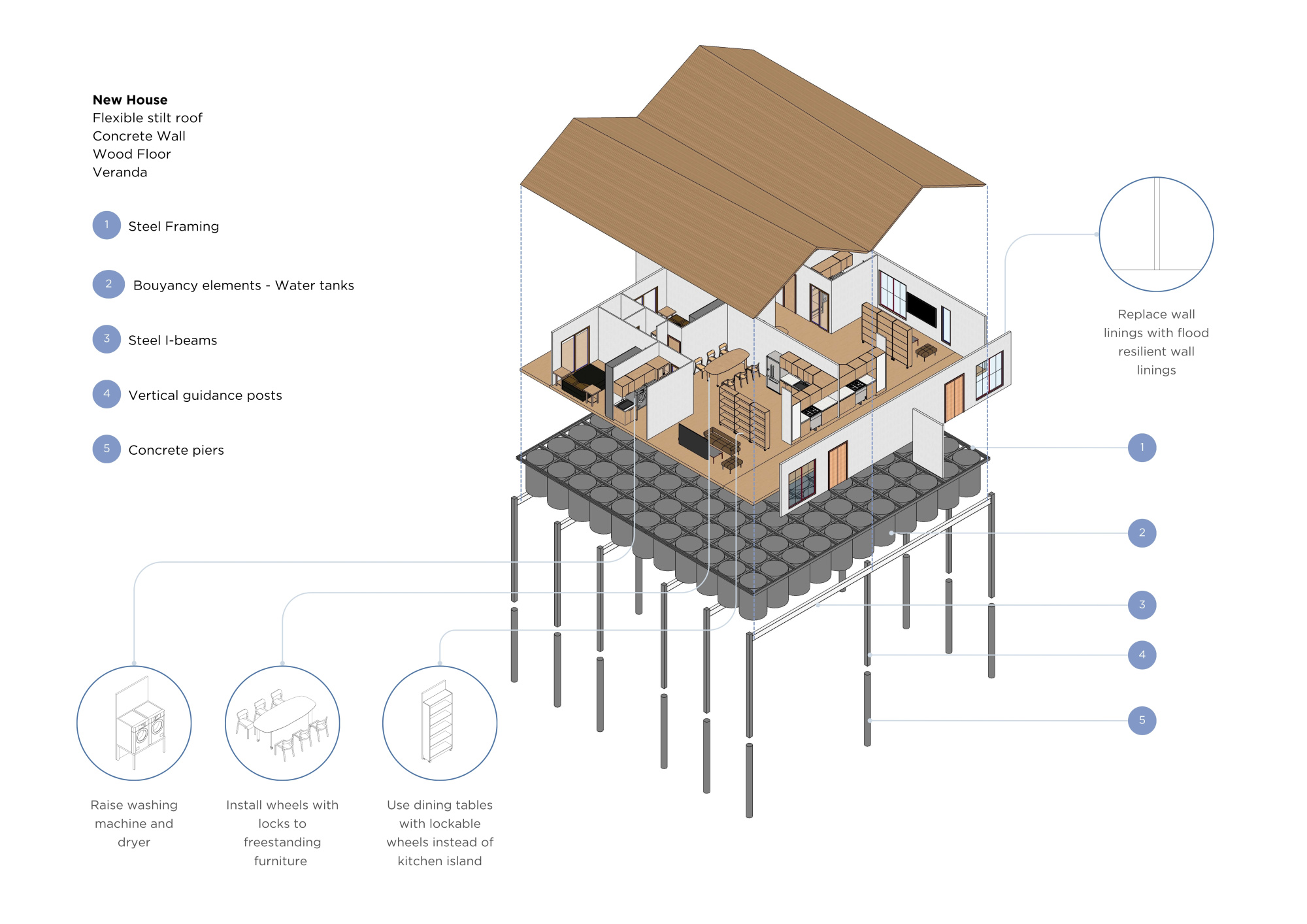Ngoc (Nina) Dang is a Vietnamese designer with a multidisciplinary background that spans photography, interior design, architecture, and film. Her work is driven by a human-centered approach, whether shaping physical spaces or visual narratives, she focuses on the lived experiences of people. Ngoc believes art is a tool to connect, reveal, and respond meaningfully to the world around us.
Ngoc (Nina) Dang

Exterior View
Anchored in simplicity and lightness, the exterior blends naturally with the surrounding houses while maintaining flood resilient.

Ground Floor Plan
Type: Twin House
6-8 Leopold Street, Maribyrnong, VIC 3032
2 beds - 1 bath
Moderately vulnerable area
Highest flood level: 2m
Area: 432m²

Axonometric
The axonometric illustrates flood resilient features that help people maintain normal living conditions during floods. Constructive structure underneath allows the house to raise up when floods come and remains on land when it is dry.

Living Area
Moment of stillness and coziness in a living area. An open and flexible space can encourage connection and adaptability. The use of large glazed openings bring in natural light and provide visual continuity with the outdoors.

Bedroom
A minimal and calm bedroom using warm timber tones promotes a sense of security and tranquility during uncertain flooding conditions.